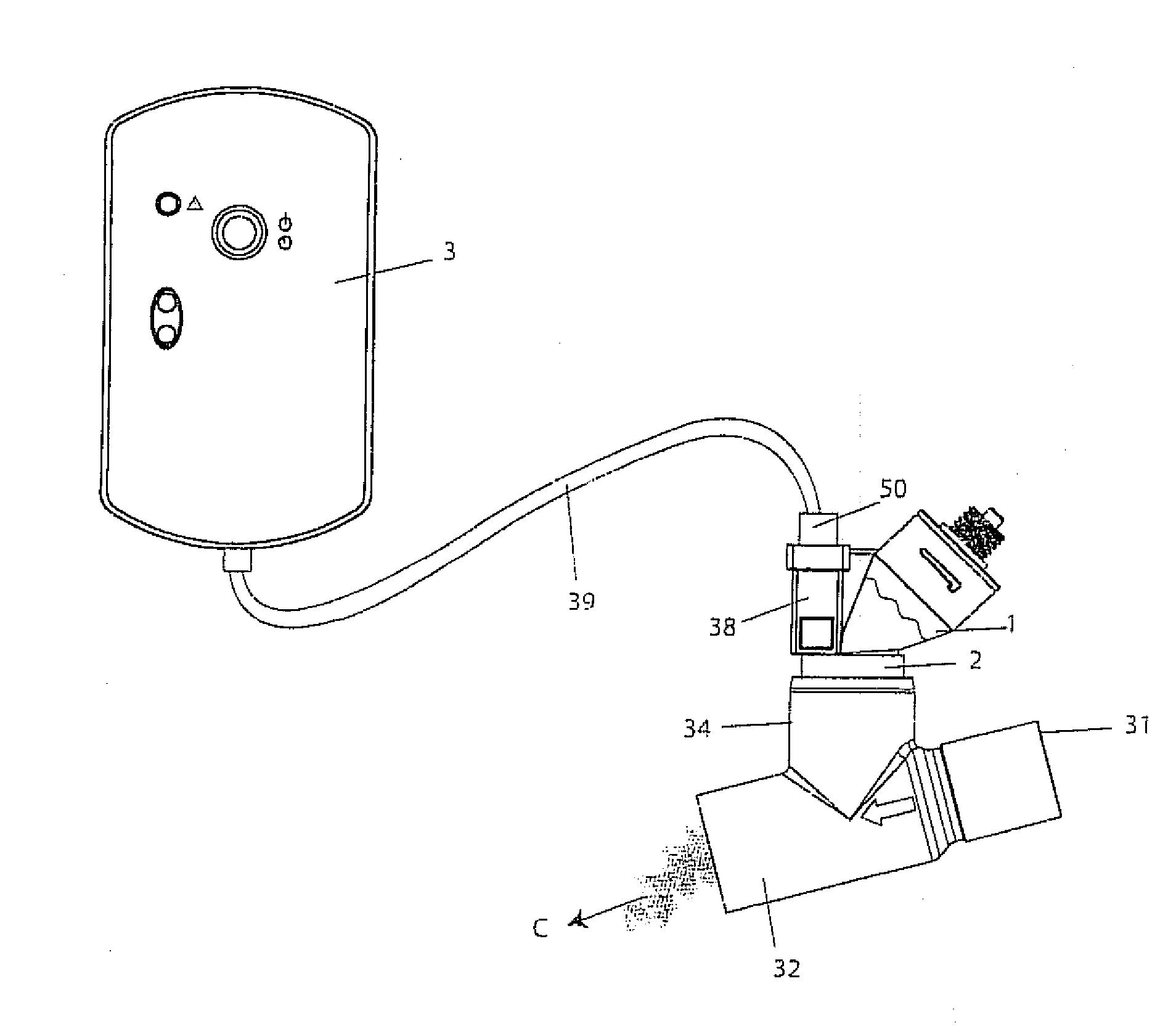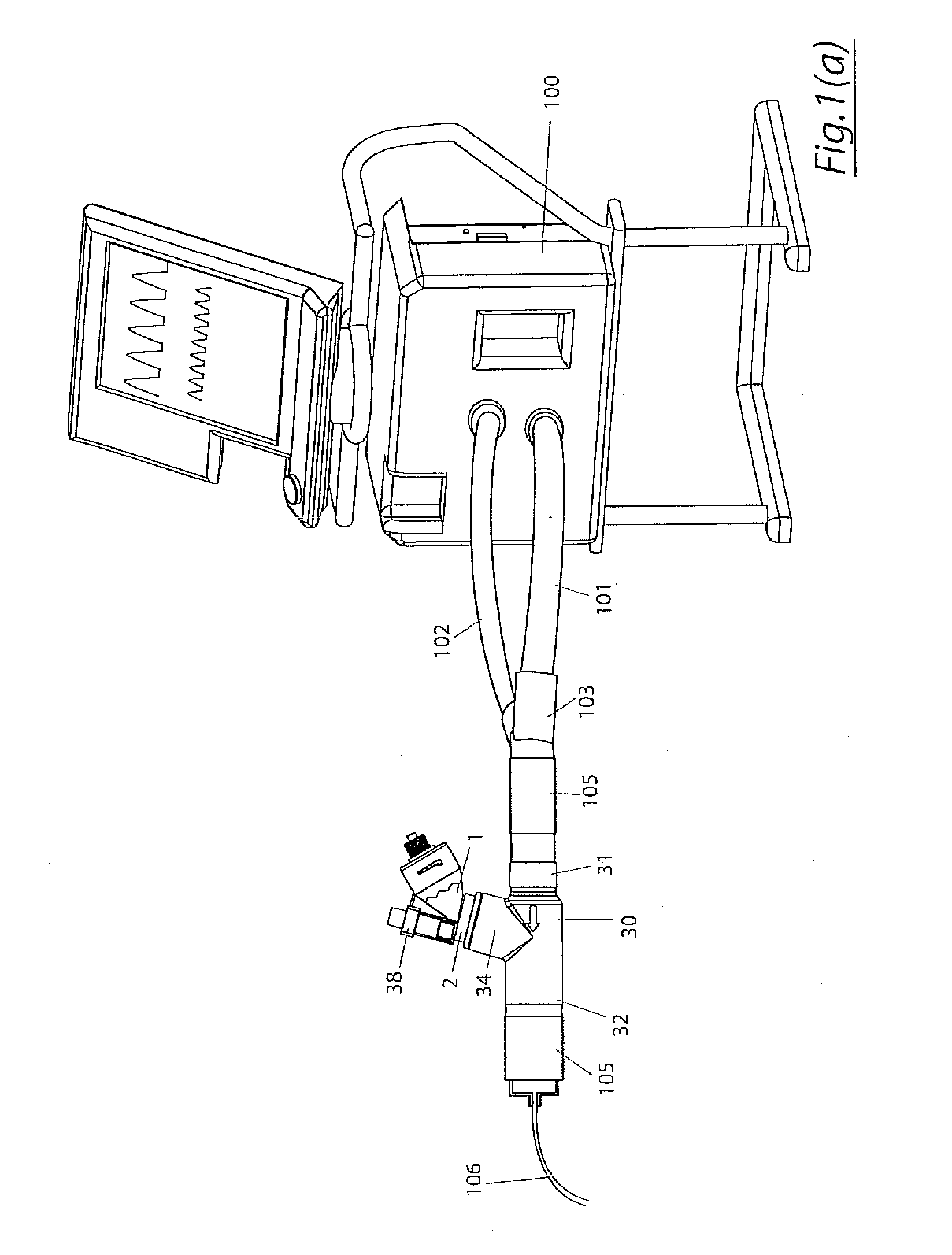Humidification in breathing circuits
a technology of breathing circuits and humidification, which is applied in the direction of gaseous fuel burners, inhalators, medical insufflators, etc., can solve the problems of inflammatory airway reactions, humidity deficit, and thick obstructive secretions
- Summary
- Abstract
- Description
- Claims
- Application Information
AI Technical Summary
Benefits of technology
Problems solved by technology
Method used
Image
Examples
Embodiment Construction
[0072]The invention provides a method and an apparatus for humidifying gas in a ventilator circuit. In the invention a humidifying agent (sterile water or sterile saline) is aerosolised and then delivered to a ventilator circuit coupled to the respiratory system of a patient.
[0073]The humidifying system of the invention is particularly useful in delivering the aerosolised humidifying agent to a patient whose breathing is being assisted by a ventilator 100 as illustrated diagrammatically in FIG. 1A. An inhalation or inspiration line 101 extends from the ventilator 100. A return or exhalation line 102 also extends to the ventilator 100. The inspiration and exhalation lines are connected to a junction piece 103, which may be a wye junction. A patient line 105 extends from the wye 103 to an endotracheal tube 106 which extends to the patients lungs. Generally, the various lines 101, 102, 105, 106 are provided by lengths of plastic tubing which are interconnected. The tubing defines lumen...
PUM
 Login to View More
Login to View More Abstract
Description
Claims
Application Information
 Login to View More
Login to View More - R&D
- Intellectual Property
- Life Sciences
- Materials
- Tech Scout
- Unparalleled Data Quality
- Higher Quality Content
- 60% Fewer Hallucinations
Browse by: Latest US Patents, China's latest patents, Technical Efficacy Thesaurus, Application Domain, Technology Topic, Popular Technical Reports.
© 2025 PatSnap. All rights reserved.Legal|Privacy policy|Modern Slavery Act Transparency Statement|Sitemap|About US| Contact US: help@patsnap.com



